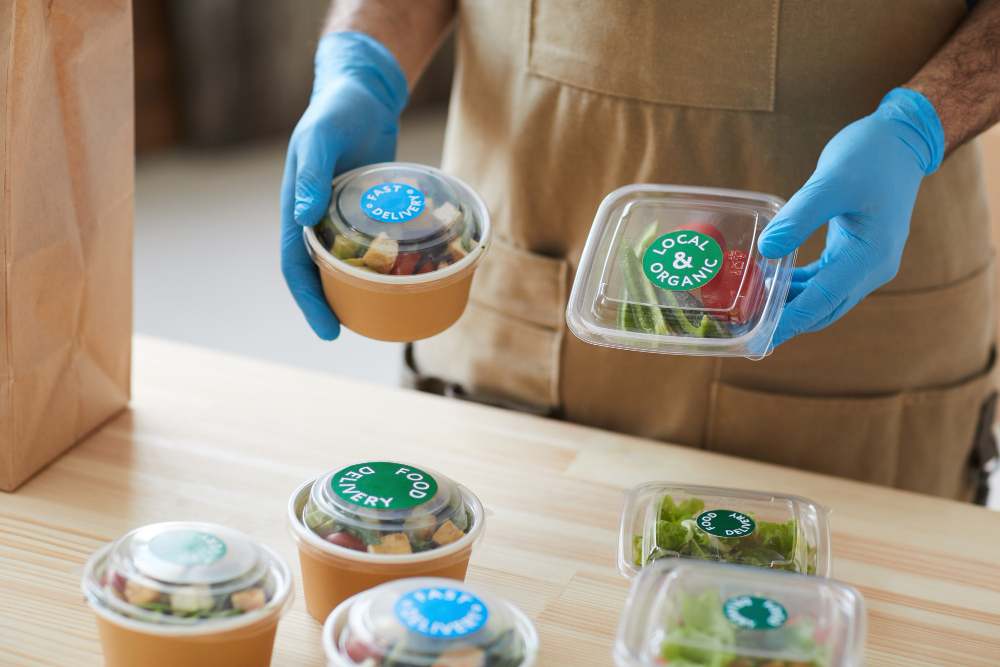Eco-Friendly Food Packaging in Malaysia: A Sustainable Shift for a Greener Future
Malaysia, a nation renowned for its vibrant street food culture and diverse culinary heritage, is facing a pressing challenge: plastic pollution. With over 1 million tons of plastic waste generated annually—40% of which comes from food packaging—the country is taking bold steps toward sustainability. From government policies like the Roadmap Towards Zero Single-Use Plastics 2018–2030 to grassroots innovations, eco-friendly food packaging is gaining momentum. This article explores the rise of environmentally friendly food packaging products in Malaysia, their benefits, challenges, and answers key FAQs to guide businesses and consumers toward greener choices.
The Urgency for Sustainable Packaging in Malaysia
Malaysia’s plastic waste crisis is exacerbated by rapid urbanization, a booming food delivery sector, and limited recycling infrastructure. Single-use plastics, such as polystyrene containers and plastic straws, clog landfills and waterways, threatening marine ecosystems and public health. In response, the Malaysian government and private sector are prioritizing alternatives that balance functionality, affordability, and environmental impact.
Types of Environmentally Friendly Food Packaging
1. Plant-Based Packaging
Made from renewable resources like sugarcane, bamboo, or cornstarch, these materials decompose naturally.
- Sugarcane Bagasse: Residue from sugarcane processing molded into containers, bowls, and clamshells. Heat-resistant and compostable.
- Rice Husk Containers: Byproducts of rice milling transformed into sturdy, biodegradable tableware.
- Palm Leaf Plates: Fallen palm leaves pressed into rustic plates and trays, popular for weddings and events.
Local Example: EcoGuard offers sugarcane bagasse containers used by KL-based cafés like PULP by Papa Palheta.
2. Edible Packaging
Innovative solutions that eliminate waste entirely:
- Seaweed-Based Wraps: Edible films made from seaweed extract, ideal for wrapping burgers or snacks.
- Rice Flour Pouches: Dissolvable packaging for spices or instant beverages.
Malaysian Innovator: Edible Innovations Malaysia is piloting seaweed wraps with street food vendors in Penang.
3. Mushroom Packaging
Mycelium (mushroom roots) grown into customizable shapes for protective packaging. While less common in food service, it’s gaining traction in shipping.
4. Recycled and Upcycled Materials
- Recycled PET (rPET): Food-grade containers made from recycled plastic bottles.
- Upcycled Agricultural Waste: Coffee husks or coconut shells repurposed into bowls.
Local Leader: TerraMakan produces upcycled coconut shell bowls for Nasi Lemak stalls.
5. Reusable Packaging
- Stainless Steel Tiffins: Durable containers for takeaway meals, promoted by zero-waste stores like The Hive Bulk Foods.
- Glass Jars: Returnable jars for sauces, salads, and beverages.
Benefits of Eco-Friendly Food Packaging
- Reduces Environmental Impact: Biodegradable materials minimize landfill waste and microplastic pollution.
- Compliance with Regulations: Aligns with Malaysia’s single-use plastic bans in states like Selangor and Penang.
- Consumer Appeal: 67% of Malaysians prefer brands with sustainable practices (Nielsen 2022).
- Economic Opportunities: Boosts local industries producing eco-packaging, such as Johor-based GreenPack.
Challenges and Solutions
- Higher Costs: Plant-based packaging can be 20–50% pricier than plastic.
- Solution: Bulk purchasing, government subsidies (e.g., MyHIJAU Mark certification incentives).
- Limited Availability: Rural areas lack access to eco-friendly suppliers.
- Solution: Partnerships with NGOs like Zero Waste Malaysia for distribution networks.
- Consumer Awareness: Misconceptions about compostability.
- Solution: Educational campaigns via social media and packaging labels.
- Infrastructure Gaps: Composting facilities are scarce.
- Solution: Community composting initiatives in cities like Kuala Lumpur.
Case Study: Success Stories in Malaysia
Company: EcoFoodPack Malaysia
Initiative: Produced biodegradable Nasi Lemak packets from pineapple leaf fibers.
Impact: Adopted by 150 hawkers in Kuala Lumpur, reducing plastic use by 8 tons monthly.
Startup: The Food Purveyor
Innovation: Launched Malaysia’s first reusable stainless steel tiffin network for corporate catering.
Result: Partnered with 30 offices, preventing 12,000 plastic containers annually.
FAQs: Eco-Friendly Food Packaging in Malaysia
1. Are eco-friendly packaging products more expensive than plastic?
Yes, but costs are decreasing as demand grows. For instance, sugarcane bagasse containers now cost RM 0.50–RM 1.00 per unit, compared to RM 0.20 for plastic. Bulk orders and government grants (e.g., Green Technology Financing Scheme) can offset expenses.
2. How can I identify genuinely compostable packaging?
Look for certifications like:
- SIRIM Eco-Label: Malaysia’s official eco-certification.
- BPI (Biodegradable Products Institute): International standard for compostability.
Avoid “greenwashing” claims—verified products will specify composting conditions.
3. Where can I buy eco-friendly food packaging in Malaysia?
- Online: EcoWarehouse, Lotus Sustainables.
- Physical Stores: TerraMakan (Klang Valley), The Hive Bulk Foods (Penang).
- Suppliers: GreenPac, EcoGuard.
4. Does the Malaysian government support eco-packaging businesses?
Yes. Incentives include:
- MyHIJAU Mark Certification: Tax breaks for sustainable products.
- Green Investment Tax Allowance: Covers 70% of qualifying capital expenditure.
- Plastic Sustainability Roadmap 2022: Targets 25% plastic recycling by 2025.
5. How should I dispose of compostable packaging?
- Home Composting: Suitable for palm leaf or bamboo products (3–6 months to decompose).
- Industrial Composting: Required for PLA (cornstarch) items—check facilities like Cenergi SEA in Selangor.
- Non-Compostable: Recyclable materials like rPET go into standard recycling bins.
Conclusion
The shift toward eco-friendly food packaging in Malaysia is no longer optional—it’s a necessity. From hawker stalls to high-end restaurants, businesses are proving that sustainability and profitability can coexist. While challenges like cost and infrastructure persist, innovations in plant-based materials, reusable systems, and government support are paving the way for a greener future. By embracing these solutions, Malaysians can preserve their culinary traditions while protecting the planet.
“The greatest threat to our planet is the belief that someone else will save it.” – Robert Swan
Add New Post ‹ Fresh Voice Hub- Guest Posting Site — WordPress










